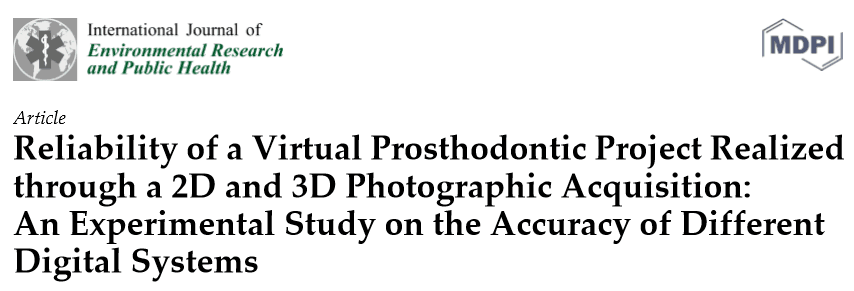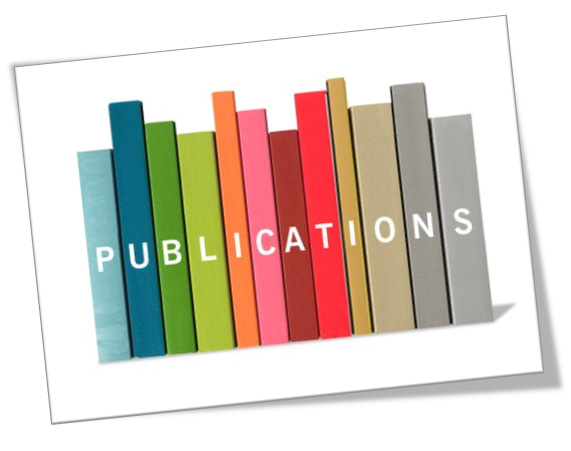Reliability of a Virtual Prosthodontic Project Realized through a 2D and 3D Photographic Acquisition: An Experimental Study on the Accuracy of Different Digital Systems
Abstract: Aims: The study aims to assess the accuracy of digital planning in dentistry, evaluating the characteristics of different intraoral 3D scanners and comparing it with traditional imaging 2D recording methods. Specifically, using computer aided design (CAD) software and measuring inside CAD software, authors want to verify the reliability of different models obtained with different techniques and machines. Methods: 12 patients that needed aesthetic restorative treatment were enrolled in the study. All the patients underwent recording data of the height and width dental elements 1.1, 1.2, and 1.3 size using different technologies and comparing 2D with 3D methods. A T test was then applied in order to verify whether there was a statistically significant difference between the measurements obtained, comparing the different tools data (Emerald, TRIOS, Photogrammetry and DSS (Digital Smile System)) with the reference values. Results: No significant differences emerged in the measurements made with the different scanners (Trios 3Shape ®, Planmeca Emerald ®) and photogrammetry. Therefore, what should be underlined regarding the 2D measurements is the speed and simplicity compared to all 3D techniques, so this work can help to better define the field of application and the limits connected to 2D techniques, giving a good window of the technique. Conclusions: The low number of patients is not sufficient to provide statistically significant results, but the digital planning future prospects seem to be promising. This study results highlighted how a photogrammetric scanner for dental arches would only have a much smaller shooting field size and greater accuracy. Despite these considerations, the photogrammetric facial scanner provided excellent results for the measurement of individual Articolo_tesi_Uni_Messina
Reliability of a Virtual Prosthodontic Project Realized through a 2D and 3D Photographic Acquisition: An Experimental Study on the Accuracy of Different Digital Systems
Abstract: Aims: The study aims to assess the accuracy of digital planning in dentistry, evaluating the characteristics of different intraoral 3D scanners and comparing it with traditional imaging 2D recording methods. Specifically, using computer aided design (CAD) software and measuring inside CAD software, authors want to verify the reliability of different models obtained with different techniques and machines. Methods: 12 patients that needed aesthetic restorative treatment were enrolled in the study. All the patients underwent recording data of the height and width dental elements 1.1, 1.2, and 1.3 size using different technologies and comparing 2D with 3D methods. A T test was then applied in order to verify whether there was a statistically significant difference between the measurements obtained, comparing the different tools data (Emerald, TRIOS, Photogrammetry and DSS (Digital Smile System)) with the reference values. Results: No significant differences emerged in the measurements made with the different scanners (Trios 3Shape ®, Planmeca Emerald ®) and photogrammetry. Therefore, what should be underlined regarding the 2D measurements is the speed and simplicity compared to all 3D techniques, so this work can help to better define the field of application and the limits connected to 2D techniques, giving a good window of the technique. Conclusions: The low number of patients is not sufficient to provide statistically significant results, but the digital planning future prospects seem to be promising. This study results highlighted how a photogrammetric scanner for dental arches would only have a much smaller shooting field size and greater accuracy. Despite these considerations, the photogrammetric facial scanner provided excellent results for the measurement of individual teeth, showing a great versatility of use. Articolo_tesi_Uni_Messina
Fully digital workflow for an Implant Retained Overdenture
Fully Digital workflow for an Implant Retained Overdenture from the digital planning to the guided surgery and the prosthetic rehabilitation.





